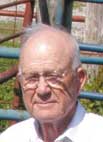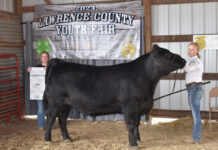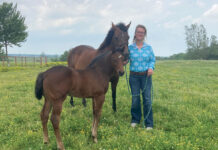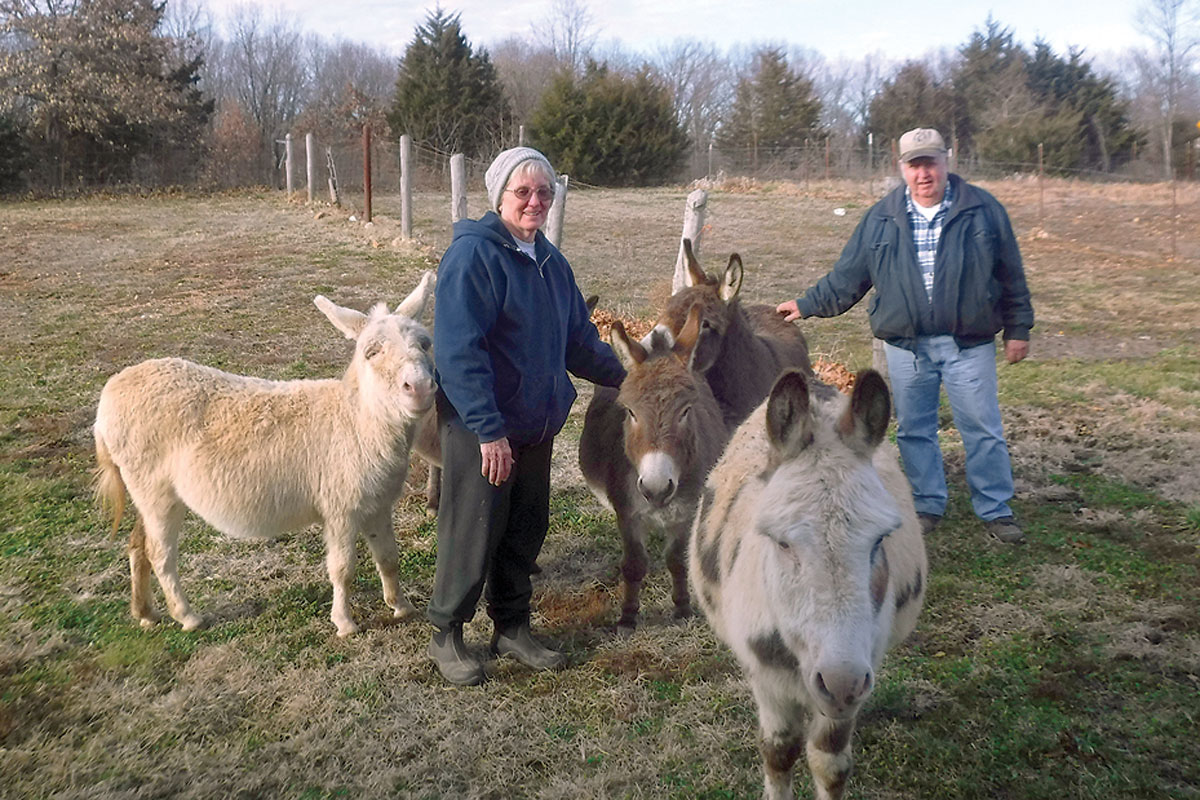 Dr. McDonald Bonebrake has had a long relationship with Hereford cattle. His early days were spent at the family farm in Salem, Mo., working with the Herefords his dad traded for sheep in the 30s. Even after “Mac” left home for medical school he still had a desire to settle at a place in the country, with a few cows of his own. Mac began practicing medicine as an obstetrician and gynecologist in Springfield, Mo., in 1952. He bought a farm east of town, and his dad got him started with a few Hereford cows. That was in 1953.
Dr. McDonald Bonebrake has had a long relationship with Hereford cattle. His early days were spent at the family farm in Salem, Mo., working with the Herefords his dad traded for sheep in the 30s. Even after “Mac” left home for medical school he still had a desire to settle at a place in the country, with a few cows of his own. Mac began practicing medicine as an obstetrician and gynecologist in Springfield, Mo., in 1952. He bought a farm east of town, and his dad got him started with a few Hereford cows. That was in 1953.
The Cattle Business Then
For over half a century Mac has owned Herefords, and he said he’s seen the breed come full circle in size and quality.
“We’ve gone through many stages,” Dr. Bonebrake said. “Early on the cattle were not conditioned as they are today. In the late 30s and 40s they became very small. Many cattle would stand waist-high (at their withers,) with 3 to 5 (score) frames. Those were the extremes of course. Some people didn’t agree with that size of cattle, though, and in ensuing decades cattle got larger, up to 7 or 8 (score) frames or more.”
Mac said that his cattle naturally changed with the trends of the times, but were never smaller than a frame 5. “If you looked at the short fat cattle then – and that’s what they were, fat – that’s what people wanted. Now they want marbling. We are trying to breed for marbling but with no excess external fat.”
The cattle industry strives to have feed efficient cattle now, Mac noted. "With rising feed, fuel, etc., efficiency is now more important than ever."
“We have about 60 head now. We sell our bulls and heifers private treaty. My family participates in the business when they can,” Mac said. His children are Ann Grace, Dr. Albert Bonebrake and Tom Bonebrake.
At the Farm in Springfield
The registered Hereford herd is managed by Rex Roy, Mac and his family. Rex and Carol Roy live on the farm and are involved in all the activities of caring for the cattle. Rex, Carol and Mac have worked together for over 25 years. "Rex knows what's going on," Mac stated, saying he is a “friend and trusted associate."
Mac and Rex have the farm custom hayed, and they also get help when working cows. The two men collaborate on decision making when it comes to feed rations and grazing. They have recently put in a stand of big bluestem and Indiangrass. Mac thinks it will take around five to six years to develop a stand. They are working to develop rotational grazing at the farm, and they already have stream protection and tree planting programs in progress.
Rex takes a strong sense of ownership in the operation. He was eager to show off his “pride and joy,” an orphaned baby Hereford calf that nuzzled anyone who came around, looking for her next meal.
On the future of Agriculture
Dr. Bonebrake said that he realizes the challenges of small farmers. He acknowledged that people have to have an extra job to make a living farming. “But on the other hand, in Missouri there are thousands of farms, and the vast majority are small, but they still make a contribution by the food and products they produce,” Mac said.
Mac is fully aware of the efforts necessary to keep agriculture a part of the ever-increasing urban life. Those efforts are real challenges today, but he still encourages young farmers to meet the future with "resolve and confidence."
“The demand for beef protein is going to continue,” Mac said. It is this kind of hope that has certainly kept farmers like Dr. Mac Bonebrake in this cattle business for generations.







